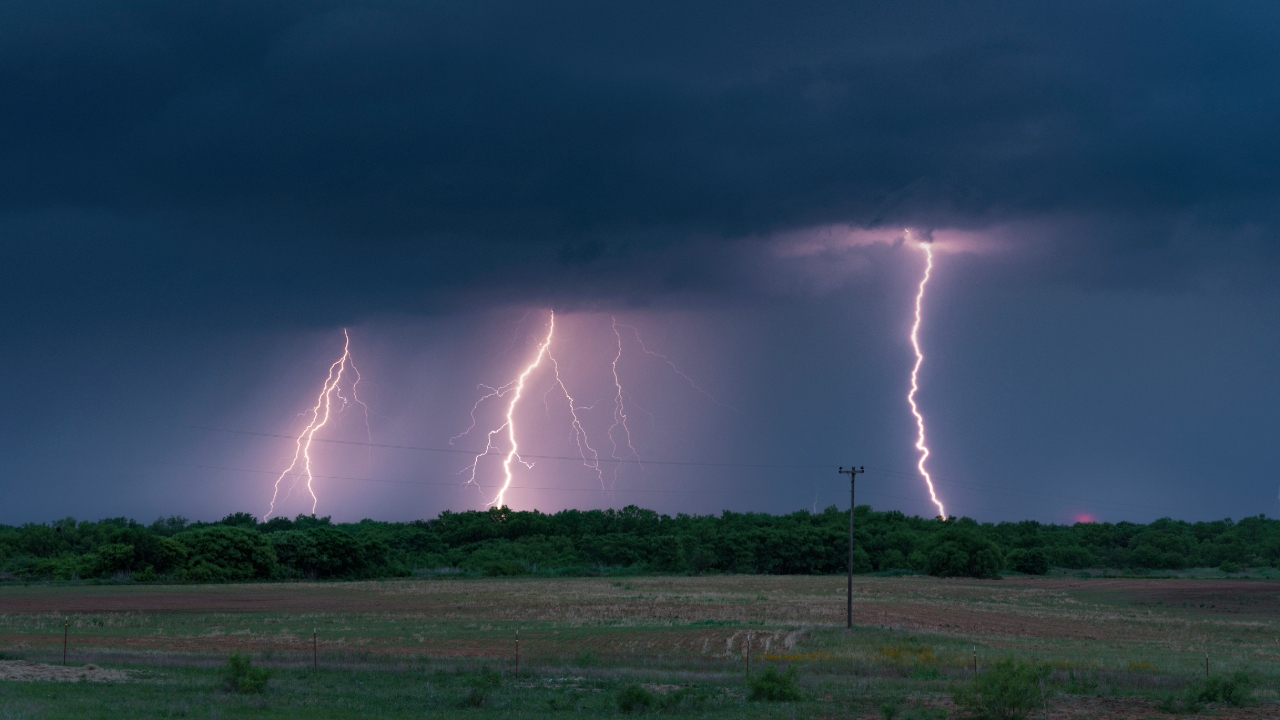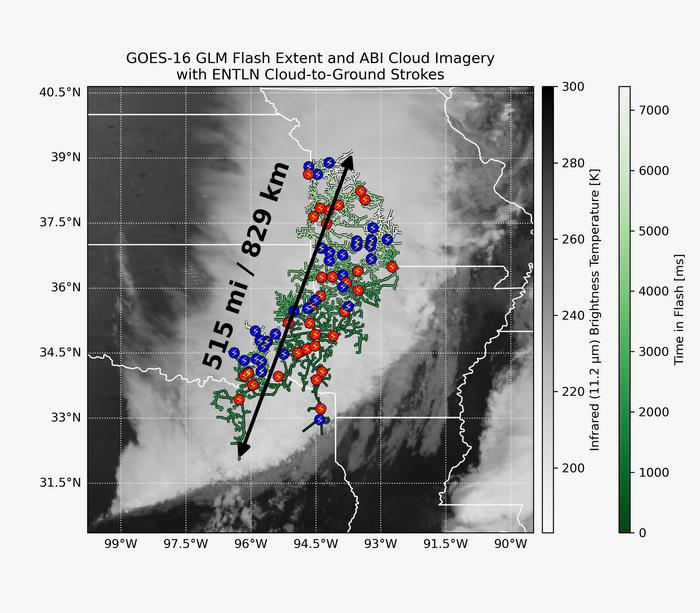New world record! Weather satellites detect 515-mile-long lightning flash
The "megaflash" occurred in 2017 and stretched from Texas to Missouri.

It's 2017, and a thunderstorm shoots off a lightning bolt. What's so special about that, you ask? Well, the bolt is an astonishing 515 miles (829 kilometers) long.
Using archival satellite data, researchers just officially confirmed the length of this enormous bolt of lightning that stretched from Texas to Missouri. It sets a new world record, besting the previous title holder — a 477-mile (768-km) bolt from 2020 — by 38 miles (61 km).
"We call it megaflash lightning and we're just now figuring out the mechanics of how and why it occurs," Randy Cerveny, an Arizona State University professor who contributed to the study, said in a statement.
Megaflash lightning is defined as a lightning bolt that reaches at least 62 miles (100 km) in length. By comparison, the average lightning bolt measures less than 10 miles (16 km) in length. (Fun fact, most lightning is just an inch or so wide.)
To determine this length of the record-holding megaflash, the team reviewed data from the National Oceanic and Atmospheric Administration's GOES-16 satellite, which is equipped with a lightning mapper that observes about one million bolts per day. Their analysis determined the true length of the bolt: a whopping 515 miles.
So, how exactly does one measure a megaflash? Previously, researchers used ground-based radio networks to track lightning bolts. However, satellites with lightning mappers are updating the process.

"Adding continuous measurements from geostationary orbit was a major advance," Michael Peterson of Georgia Tech Research Institute, who served as lead author of a paper on the study, said in the statement. "We are now at a point where most of the global megaflash hotspots are covered by a geostationary satellite, and data processing techniques have improved to properly represent flashes in the vast quantity of observational data at all scales."
Breaking space news, the latest updates on rocket launches, skywatching events and more!
Megaflashes like these are quite rare — less than one percent of thunderstorms produce them. Typically speaking, the thunderstorms that indeed manage to produce them must be churning for 14 hours or more, covering an area at least the size of the state of New Jersey, per Peterson's research.
Those conditions aren't altogether that rare, to be fair. And, as our lightning-mapping satellites collect new data, we'll probably start noticing even more megaflashes. "It is likely that even greater extremes still exist, and that we will be able to observe them as additional high-quality lightning measurements accumulate over time," said Cerveny,
A paper on the research was published in the Bulletin of the American Meteorological Society.

Space.com contributing writer Stefanie Waldek is a self-taught space nerd and aviation geek who is passionate about all things spaceflight and astronomy. With a background in travel and design journalism, as well as a Bachelor of Arts degree from New York University, she specializes in the budding space tourism industry and Earth-based astrotourism. In her free time, you can find her watching rocket launches or looking up at the stars, wondering what is out there. Learn more about her work at www.stefaniewaldek.com.
You must confirm your public display name before commenting
Please logout and then login again, you will then be prompted to enter your display name.
